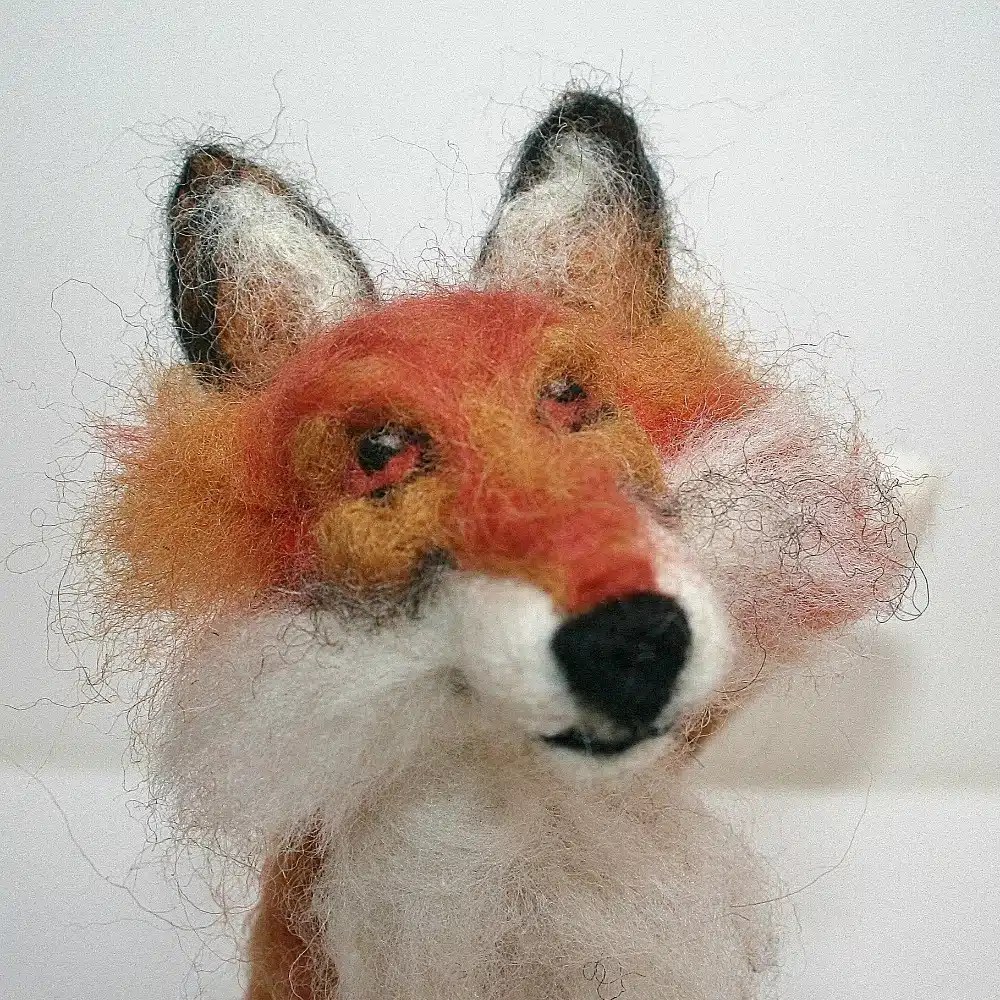
Needle felting, a delightful crafting pursuit, grants you the joy of turning raw wool into enchanting sculptures. Whether you’re venturing into this craft as a complete novice or honing your expertise as a seasoned needle felter, this blog post is ready to provide you with a wealth of valuable insights and tips. Within its pages, discover a treasure trove of knowledge to aid you in the creation of truly splendid felted masterpieces. Immerse yourself in this informative read for top-notch guidance, promising to elevate your skills and have you crafting marvelous felted wonders with ease and finesse in practically no time at all. Happy felting crafters!





Needle Felting Made Easy Key Points:
Choosing the Right Materials:
- High-quality felting needles: Invest in fine and coarse felting needles for different tasks.
- Wool roving: Select natural wool roving in various colors to bring your creations to life.
- Felting pad or mat: A soft surface to work on and protect your needles.
- Optional extras: Consider wire armatures, felting handles, and googly eyes for more complex projects.
Understanding Your Tools
- Learn about the different types of felting needles and their uses.
- Understand the purpose of your felting pad or mat and how it helps in the felting process.
- Experiment with optional tools to see what works best for your projects.
Mastering The Basics
- Learn how to properly hold and use felting needles to avoid accidents.
- Practice the basic poking and stabbing motions to shape and sculpt your wool.
- Start with simple shapes like balls and cylinders to get a feel for the process.


Creating Sculptures with Depth
- Gradually add layers of wool to build up your sculpture’s volume and form.
- Pay attention to proportions and symmetry for realistic results.
- Use reference images or real-life objects for inspiration and guidance.
Adding Details and Textures
- Experiment with different felting needle sizes to achieve varying levels of detail.
- Create textures like fur, feathers, or scales by altering your poking technique.
- Blend and mix colors of wool roving to achieve realistic shading and highlights.
Troubleshooting Common Issues
- Learn how to fix loose or unevenly felted areas by reworking them with your needles.
- Address fuzziness by gently felting the surface with a fine needle.
- If your sculpture becomes too firm, use a coarser needle to soften it.


Improving Your Techniques
- Once you’ve mastered the basics of needle felting and crafted your fair share of adorable animals, it’s time to elevate your skills to the next level. Exploring advanced techniques can open up a world of creative possibilities.
- Consider delving into the art of wire armature construction, a method that allows for more intricate and poseable creations.
- Multiple-needle felting is another exciting option, enabling you to work on larger projects efficiently while achieving a smoother finish. Layering techniques provide a way to add depth and realism to your creations, as you blend colors and textures with finesse.
- These advanced techniques will not only challenge your abilities but also empower you to bring your needle-felted masterpieces to life in new and captivating ways.
Following the Step-by-Step Video Tutorials
- To make learning needle felting even more accessible and enjoyable, I’ve put together an extensive library of step-by-step video tutorials. Whether you’re seeking quick tips or want to follow the entire process of crafting an animal from start to finish, my videos are designed to replicate the experience of a live workshop. They’re unhurried, ensuring you grasp each technique, and they’re fantastic for boosting your confidence and skills with every completed project. You can easily follow along with the videos, pausing and rewinding as needed, allowing you to master each aspect of needle felting. With over a decade of teaching and curating inspiring kits since 2014, you’re bound to discover the perfect projects that pique your creative interests.


To sum it all up, needle felting isn’t just a craft; it’s a wonderfully satisfying journey into the realm of creativity. Regardless of whether you’re a newbie embarking on this fluffy adventure or a seasoned felter perfecting your skills, the treasure trove of insights, tips, and those comprehensive video tutorials we’ve discussed here will undoubtedly work their magic, boosting your felting prowess and enabling you to create wonderful needle felted animals. And let’s not forget our trusty companions : practice and patience. They’re the unsung heroes, steering us toward confidence and proficiency in the world of needle felting.
So, just go for it! Enjoy turning simple, soft wool into beautiful needle felted animals. Let your imagination run wild in this fascinating world of needle felting. Your artistic potential isn’t limited to the sky; think of it as a canvas, and your creativity guides the way!
Ready To Start? You will love these as well!
Want to Start needle felting today?
Instantly download a needle felting pattern and get started straight away! On the hunt for inspiring needle felting patterns? There are patterns for all abilities on the website, from nervous beginners to confident needle felters, there is a pattern and video tutorial for you.
EASIEST EVER NEEDLE FELTED SHEEP VIDEO TUTORIAL!
Felt along with me, workshop style. Step by creative step.


















































































































































